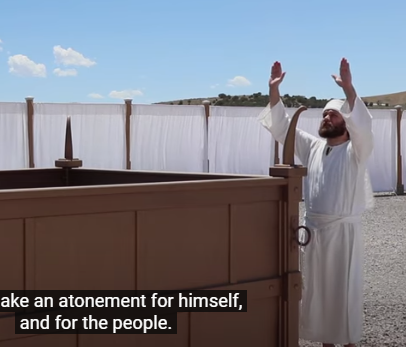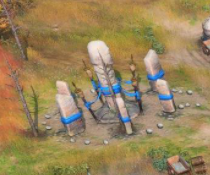-
Posts
25.684 -
Joined
-
Days Won
300
Everything posted by Lion.Kanzen
-
https://forums.ageofempires.com/t/what-did-you-do/184007 More complaints. ------ I was a beta tester. over the course of the beta a whole bunch of quality of life improvements were suggested. I just played a match in the release copy and cross referenced it with everything i could remember being talked about on the beta forums: chinese official still counts as an idle villager chinese dynasty ui element still too close to center of screen hover over on dropdowns still broken (biomes) still cannot shift click complex orders such as grab the deer and then drop it off (i assume you cant shift click grab then deposit a relic still either) still cannot map controls to mouse buttons no new hotkey commands that people were asking for (select all TC or select all barracks for example) still cannot rebuild a wall turret if a tower is too close farmers still dont peel off when building a group of farms still no global build queue right click with villagers on objects near other objects still iffy but maybe better wall turrets in FoW fixed What did the devs even do between beta and release? and for that matter what was that mongol fix, really? The most disappointing thing about this game isn’t even that the beta testers got ignored and so it came out without the quality of its predecessors, its that it fractured the community around a truly great game (2DE) and everyone is just fighting now; myself included apparently
-
https://forums.ageofempires.com/t/i-couldnt-take-it-anymore-and-i-went-to-play-aoe-2/183641 it is broken ... ___ The post BeetleRock203671 3d Hi. Hi, I could no longer play this game. This game is about 70 percent complete. Today’s patch broke the game even more … replays still don’t work. It’s crazy overall that we paid 60 euros … The graphics hurt my eyes … so childish that I’m sick of it … I hope someone makes a proper RTS strategy … Hooray for AoE 2 it’s a gem in RTS. Try to go back to AoE 2 and you will see the beauty … the details, the animations, the arrows of the trajectory. arrows do not hit and much more
-
I heard you can't to choose a color player. No ranking. I'm sure Empires Apart did better. No bell alarm to garrison.
-
the disappointments are already beginning. Spanish.
-
It seems that the pro layers were paid or have a contract. Their fans ask for AoE 2 in the comments and they don't stop playing AoE IV Daut Hera The Viper The Mista Tatoh
-
Se me olvidan que mi buscador tiene ese defecto.
-
.thumb.png.ce58cea22940c255f5b0a735d5abee36.png)
Special units Concept Art.
Lion.Kanzen replied to Lion.Kanzen's topic in Eyecandy, custom projects and misc.
Engineer Can build engines and siege equipment. (Capturable). -
The reason this thread was created was to inspire and increase the amount of eye-candiers and eye-candy being produced here at WF. In my opinion, AOE3H has some of the best designers out there, that are currently working on this game. So this conceptual is mainly for generic, and pretty much generic-eye-candy only, although the tips can be used in other areas. another idea is to suggest generic unit animations, such as units throwing rocks or torches. Arsonist. but shuold be Celtic. perhaps in rags. High priest. the animation will be like this. The Diplomatic. with a roll or a letter in his hand. Assasin.
-
If you need another one, let me know, I'm in the mood to make posters.
-
-
.thumb.png.ce58cea22940c255f5b0a735d5abee36.png)
0 A.D. Social Media Accounts (We need you!)
Lion.Kanzen replied to Sundiata's topic in Announcements / News
definitely go seasonally. -
http://rtw.heavengames.com/albums/ArtAssault/AA_tower.jpg It is the normal siege tower from RTW 1. The difference is that it is open like the Mayan siege tower. is quite similar except for the scale. and some details. The characteristics will be detachable. Its projectiles will be incendiary.
-
It would be quite worthwhile, because no other game has this mechanic, it would be assembled and disassembled.
-
https://news.xbox.com/en-us/2021/11/17/age-of-empires-iv-content-roadmap/ No waypoins?(yet).
-
yes.
-
Not all units. @wowgetoffyourcellphone What units other than slaves do you have in Delenda Est?
-
Assassin bonus vs Heroes. Engineer Can build engines and siege equipment. (Capturable) Arsonist : Burn all flammable things. Slave: gathering Bonus. Diplomatic: It can spy and convert. High priest can convert. Druid: can fight and heal. Banner men: Bonus Aura for Defense and attack.
-
.thumb.png.ce58cea22940c255f5b0a735d5abee36.png)
RTS War: RTS vs another RTS
Lion.Kanzen replied to Lion.Kanzen's topic in Introductions & Off-Topic Discussion
-
-
YAAASSSS
-
-
the music is very good. quite relaxes.
-
.thumb.png.ce58cea22940c255f5b0a735d5abee36.png)
The Halt command (H key) - does anyone use it?
Lion.Kanzen replied to mysticjim's topic in General Discussion
Same here.










